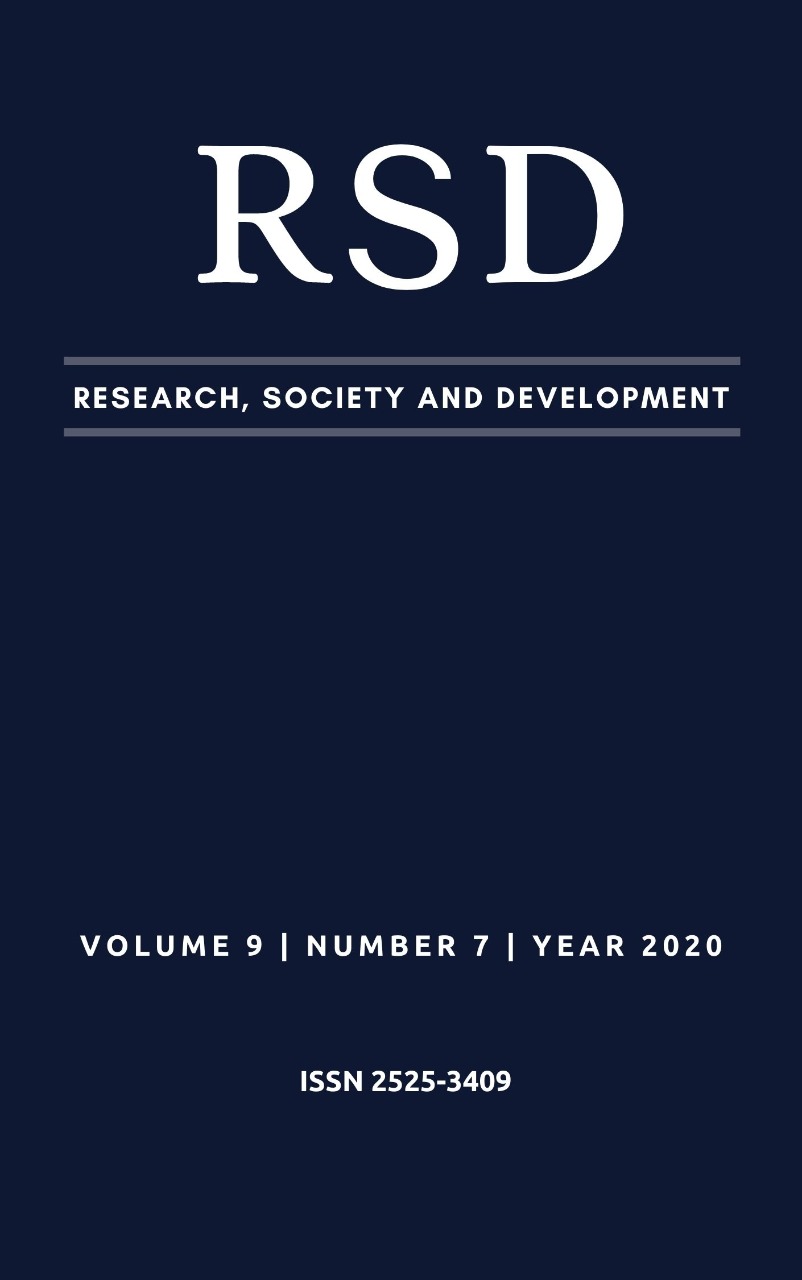A study on the variation of the coefficients of a quadratic function in the geogebra software environment
DOI:
https://doi.org/10.33448/rsd-v9i7.3742Keywords:
Quadratic functions, Geogebra software, Mathematics, Variation of coefficients.Abstract
This work aims to analyze the behavior of the graph of a quadratic function, with the variation of its coefficients, interpreting the relationships established between its algebraic and graphical representations, using the geogebra software environment for this. The methodological procedure included the exploration and investigation of quadratic functions using the tools of the geogebra software, for the analysis of the behavior of the graph of this function due to variations in the values of its coefficients. In the analyzes we studied the remarkable points of the quadratic function, making the identification of its roots and the vertex of the parabola. We also proceed with the analysis of the variation of each function coefficient individually, ending with the analysis of the variation of the quadratic function discriminant. We conclude that, with the proper use of the tools of the geogebra software, and thanks to its dynamic aspect, it is possible to identify and interpret more efficiently the existing relationships between the algebraic and graphical representations of this function.
References
Barreto, A. L. O. (2009). A análise da compreensão do conceito de funções mediado por ambientes computacionais. (Tese de Doutorado) Faculdade de Educação, Universidade Federal do Ceará - UFC, Fortaleza.
Borba, M. C., & Penteado, M. G. (2001). Informática e Educação Matemática: Coleção Tendências em Educação Matemática. 2. ed. Belo Horizonte: Autêntica.
Brasil (2016). Ministério da Educação - MEC. Base Nacional Comum Curricular - BNCC. Proposta Preliminar – 2ª Versão. Brasília: MEC/SEF.
Brasil (2006). Ministério da Educação - MEC. Orientações curriculares para o ensino médio: Ciências da natureza, matemática e suas tecnologias. v. 2. Brasília: Secretaria de Educação Média e Tecnológica - SEMTEC.
Cruz, M. M., & Pontello, L. S. (2008, julho). Utilizando Software Matemático como mediador do Ensino de Gráficos de Funções Quadráticas. Anais da III Jornada Cearense de Educação Matemática – III JCEM, 2008, Fortaleza: IFCE, p. 257-281.
D’Ambrosio, U. (1999). Uma análise dos Parâmetros Curriculares em Matemática. Educação Matemática em Revista. São Paulo, n. 7, ano 6.
Gil, A. C. (2011). Métodos e Técnicas de Pesquisa Social. 6. ed. São Paulo: Atlas.
Hohenwarter, M., & Hohenwarter, J. (2009). Ajuda GeoGebra: Manual oficial da versão 3.2. Traduzido para português de Portugal por Antonio Ribeiro. Lisboa. Recuperado de: https://app.geogebra.org/help/docupt_PT.pdf
Iezzi, G. et al. (2000). Fundamento de Matemática Elementar: conjuntos e funções. v. 1, 3. ed. São Paulo: Atual.
Lima, E. L. et al. (2006). A Matemática do Ensino Médio - vol. 1. 6. ed. Coleção do Professor de Matemática. Rio de Janeiro: Sociedade Brasileira de Matemática – SBM.
Macêdo, J. A. de, Santos, A. C. L. dos, & Lopes, L. R. P. (2020). Contribuições do uso do software GeoGebra no estudo da derivada. Research, Society and Development, Itabira, v. 9, n. 3, p. e156932611, mar. 2020. Recuperado de: https://rsd.unifei.edu.br/index.php/rsd/article/ view/2611/2030
Pais, L. C. (2010). Educação Escolar e as Tecnologias da Informática. Belo Horizonte: Autêntica.
Prodanov, C. C., & Freitas, E. C. (2013). Metodologia do trabalho científico: métodos e técnicas da pesquisa e do trabalho acadêmico. 2. ed. Novo Hamburgo: Feevale. Recuperado de: http://www.feevale.br/Comum/midias/8807f05a-14d0-4d5b-b1ad-1538f3aef538/E-book%20 Metodologia%20do%20Trabalho%20 Cientifico.pdf
Sancho, J. M. (2006). De Tecnologias da Informação e Comunicação a Recursos Educativos. In: Sancho, J. M., & Hernandez, F. (Orgs.). Tecnologias para Transformar a Educação. (1a ed., Cap. 1, pp. 17-38). Porto alegre: Artmed.
Smole, K. S., & Diniz, M. I. (2013). Matemática: Ensino Médio. v. 1. 8. ed. São Paulo: Saraiva.
Downloads
Published
Issue
Section
License
Authors who publish with this journal agree to the following terms:
1) Authors retain copyright and grant the journal right of first publication with the work simultaneously licensed under a Creative Commons Attribution License that allows others to share the work with an acknowledgement of the work's authorship and initial publication in this journal.
2) Authors are able to enter into separate, additional contractual arrangements for the non-exclusive distribution of the journal's published version of the work (e.g., post it to an institutional repository or publish it in a book), with an acknowledgement of its initial publication in this journal.
3) Authors are permitted and encouraged to post their work online (e.g., in institutional repositories or on their website) prior to and during the submission process, as it can lead to productive exchanges, as well as earlier and greater citation of published work.


